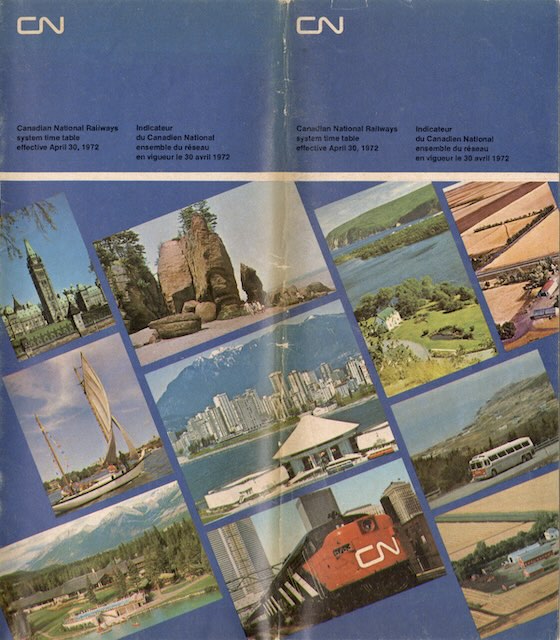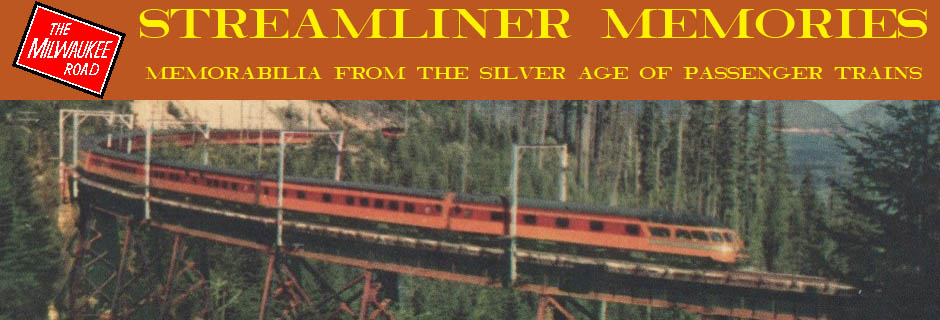I’ve put up with timetables that put their main cover on the back. I’ve accepted that it could make sense for timetables to number each panel rather than each page. But this timetable commits a cardinal sin that is unforgivable: it starts numbering pages on a left-hand page, so that the left-hand pages are odd numbers and the right-hand pages are even numbers.
 Click image to download a 17.5-MB PDF of this 24-page timetable.
Click image to download a 17.5-MB PDF of this 24-page timetable.
Anyone who has put together a book knows that odd numbered pages appear on the right and even numbers are on the left. Every CN timetable I’ve found before this one does it right. How did this one get it so horribly wrong?
The fifteen-month gap between the timetable presented here yesterday and this one is at least partially filled in by the February 1971 and the October 1971 editions shown here previously. Neither of those put the odd numbers on the left pages.
However, the February 1971 did change the centerfold map to one that is a little more detailed than the one that was introduced in the October 1967 edition. It shows a few more branch lines, locates more cities, and has provincial and national borders that are little less abstract. That map is also used in today’s edition.
While the map is a bit better, the page count has fallen to just 24 compared with 52 in yesterday’s timetable. The February 1971 had dropped to 40 pages and October 1971 to 28 pages. The decline from 52 pages is only partially due to train terminations: the 1970 timetable had about 50 tables of schedules while this one has 45, which isn’t enough to account for a loss of more than half the pages.
A large part of the difference is that today’s timetable often crams more tables on a single page, made possible by eliminating much of the white space I mentioned a few days ago. Other things have been reduced or eliminated: the condensed timetables, equipment lists, and fares are gone; the station index, which once filled nine pages, was reduced from four pages in 1970 to two pages in 1972; part of the index was on the inside back cover in place of a full-page ad; and the list of CN agents was reduced from two pages to one.
Because the equipment lists are gone, we don’t know how many cars were on the Super Continental or other trains. However, the timetable does make clear that, between June 23 and September 6, CN operated the Super as two trains, one from Montreal and one from Toronto, as it had done in most summers since 1967.
None of these timetables show the Turbo trains. After putting them in service a year-and-a-half late in December 1968, CN suspended them the very next month. It then put them back on service in May 1970 but suspended them again in February 1971. It wasn’t until 1974 that all the problems had apparently been fixed and the trains started steady service, but even that lasted only eight years before the trains were withdrawn and scrapped.
